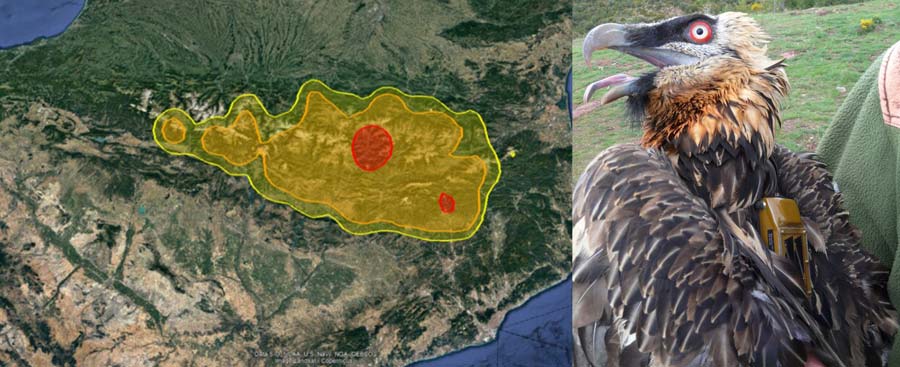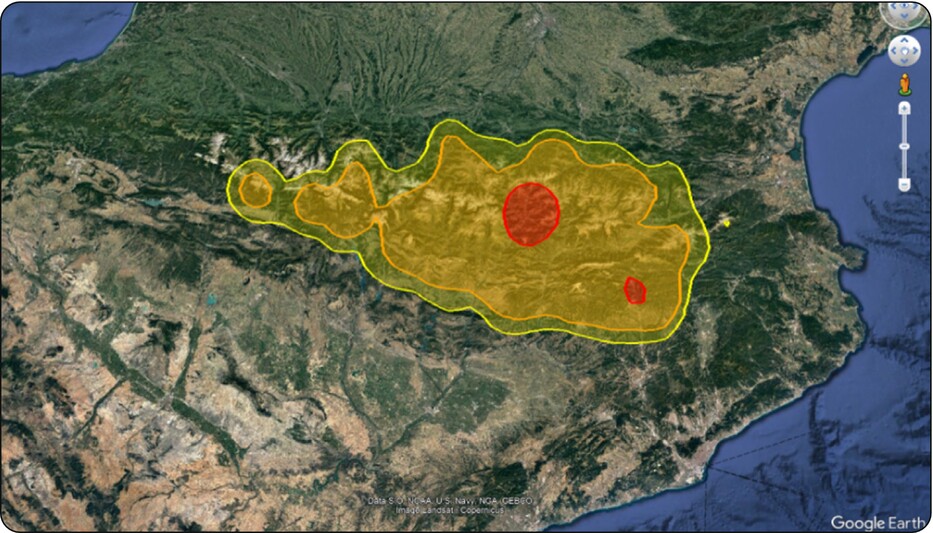← Back
A Bearded Vulture Tracked for 14 years

Bearded vultures are essential to the ecosystems they inhabit. This threatened species has been monitored for a better understanding and protection in the Pyrenees mountains for about 30 years now. An individual, in particular, has been tracked for 14 years with the same Argos PTT, which is most probably a record.
Bearded vultures (Gypaetus barbatus) are near-threatened vultures, resident of Europe, Africa and Asia. They are playing an essential role by feeding on the corpses of wild and domestic animals. In some areas the species became extinct. In some others it remains, including in the Pyrenees mountains where 70% of the European population now live, with a population which has increased since the 1980s.
To better understand the behaviour and habitat of the species, the Pyrenean Institute of Ecology-CSIC (Spain) has been conducting a long-term project in the Pyrenees lead by Dr. Antoni Margalida. Individuals were tagged with Argos PTTs starting in the early 1990s.
In 2009, in particular, several individuals were tagged with 70-g solar-powered Argos PTTs. One of those individuals, nicknamed Adrian, a four-year-old subadult male, had been localized from 2009 up to 2023 with the same transmitter — possibly the longest ever tracking without refitting, spanning 14 years. The use of solar-powered devices enabled such records, since the source of energy can not get depleted regardless of how much time has elapsed since equipment.
More info about animal tracking with Argos

This very long-term monitoring of a bearded vulture showed how this male bird established territory at different ages (in 2013 at eight, and in 2019) when breeding, and otherwise remained at large. Adrian’s lifetime reproductive success after 18 years has only been three fledglings (two chicks between 2013 and 2016, one between 2020 and 2023). The study enabled to discover, in particular, that non-breeding individuals have foraging areas of 10,000 km2. Territorial adults, on the other hand, have much smaller areas of 60 km2 (Margalida et al. 2016). It also gave insight into the breeding and feeding sites and their use. It also highlighted the fact that the species roams the Pyrenees without leaving the mountains (Margalida et al. 2013). This means that the Pyrenees population can get denser but that it is not spreading over other regions facilitating the geographic expansion of the species.
Long-term movement research is fundamental to developing conservation and management plans for long-lived species such as bearded vultures.
Reference & links
- Margalida, A. (2024), Duration record for a GPS-transmitter fitted to a vulture. Front Ecol Environ, 22: e2773. https://doi.org/10.1002/fee.2773
- Margalida, A., Pérez-García, J.M., Afonso, I. & Moreno-Opo, R. et al. (2016) Spatial and temporal movements in Pyrenean bearded vultures (Gypaetus barbatus): Integrating movement ecology into conservation practice. Scientific Reports 6: 35746. https://doi.org/10.1038/srep35746
- Margalida, A., Carrete, M., Hegglin, D., Serrano, D., Arenas, R. & Donázar, J.A. (2013) Uneven large-scale movement patterns in wild and reintroduced pre-adult bearded vultures: conservation implications. PLoS ONE 8: e65857. https://doi.org/10.1371/journal.pone.0065857
